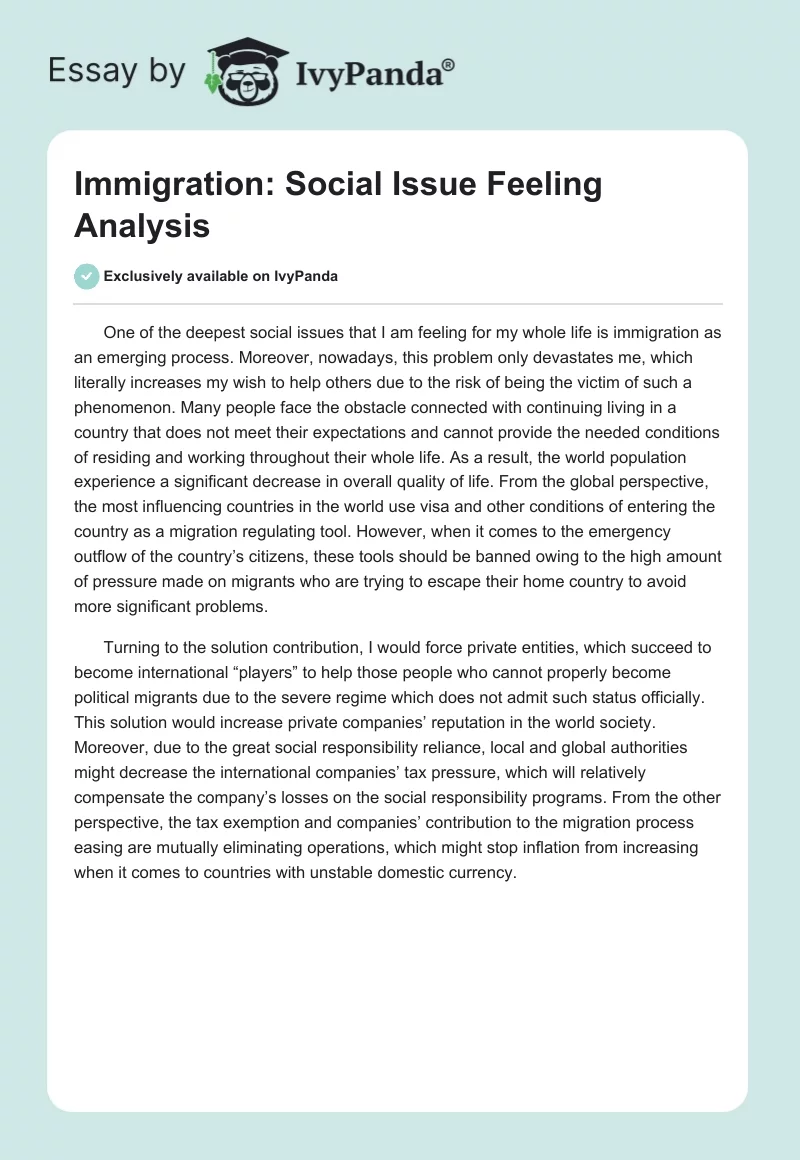One of the deepest social issues that I am feeling for my whole life is immigration as an emerging process. Moreover, nowadays, this problem only devastates me, which literally increases my wish to help others due to the risk of being the victim of such a phenomenon. Many people face the obstacle connected with continuing living in a country that does not meet their expectations and cannot provide the needed conditions of residing and working throughout their whole life. As a result, the world population experience a significant decrease in overall quality of life. From the global perspective, the most influencing countries in the world use visa and other conditions of entering the country as a migration regulating tool. However, when it comes to the emergency outflow of the country’s citizens, these tools should be banned owing to the high amount of pressure made on migrants who are trying to escape their home country to avoid more significant problems.
Turning to the solution contribution, I would force private entities, which succeed to become international “players” to help those people who cannot properly become political migrants due to the severe regime which does not admit such status officially. This solution would increase private companies’ reputation in the world society. Moreover, due to the great social responsibility reliance, local and global authorities might decrease the international companies’ tax pressure, which will relatively compensate the company’s losses on the social responsibility programs. From the other perspective, the tax exemption and companies’ contribution to the migration process easing are mutually eliminating operations, which might stop inflation from increasing when it comes to countries with unstable domestic currency.

